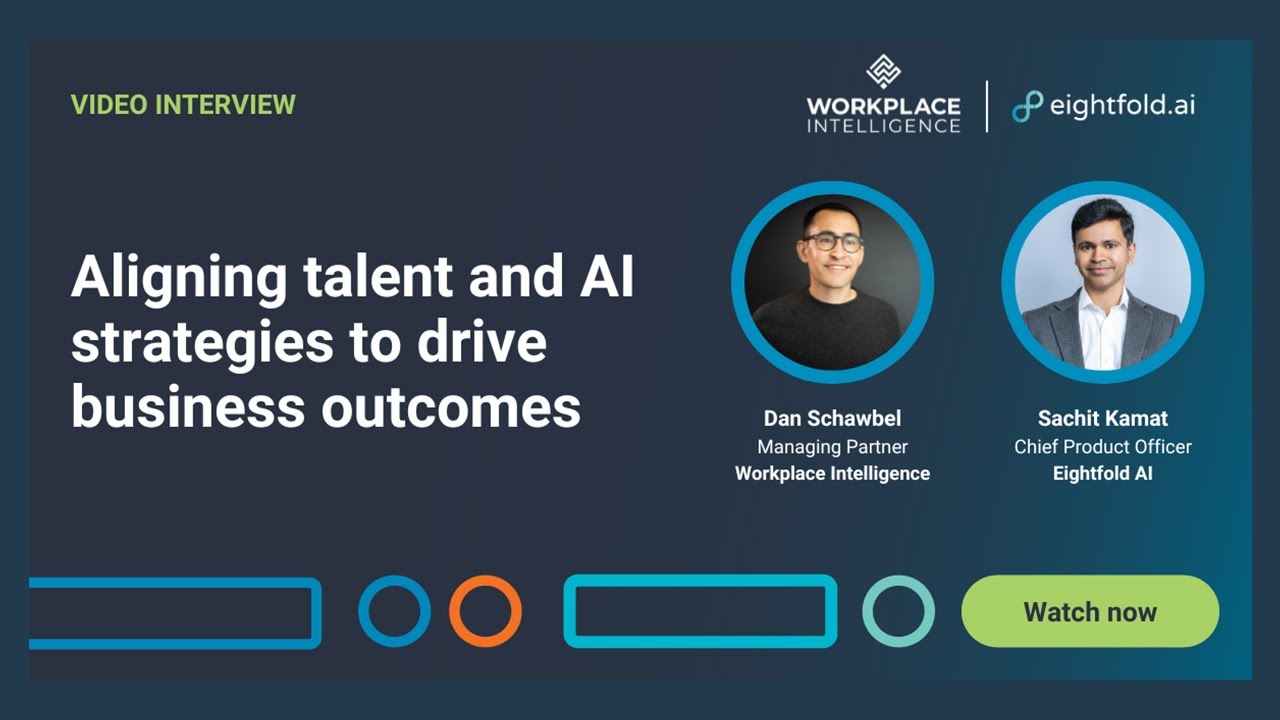- 2023 was a mixed bag: A recession that many economists predicted didn’t manifest, and the labor market remained strong despite some layoffs.
- For 2024, employers will continue to cautiously add jobs, including more specialized jobs around AI.
- Retention and upskilling are still priorities, as worker and skills shortages abound, especially when it comes to using AI-driven technologies.
One of the largest surprises of 2023 was that a recession, which many economists and experts had forecasted, failed to materialize. However, the labor market was still a roller coaster with layoffs in some sectors and labor shortages in others. Although it’s premature to declare victory, a soft landing without a recession looks likely. Here are three cautiously optimistic predictions for the labor market in 2024.

Related content: Watch our Chief Product Officer Sachit Kamat explain how to align talent and AI strategies to drive business outcomes.
1. The labor market will continue to add jobs
The wider economy has proven to be resilient in the face of higher interest rates and soaring inflation. Employment growth has only trended slightly lower. However, if the recent strength of the labor market is any indication of cyclical forces, then this demand for workers will continue even as the overall labor market rebalances and cools in 2024.
The labor market is expected to continue adding jobs in the first half of 2024 but job growth is anticipated to slow and the unemployment rate to gradually increase. If unemployment remains under the historically low 4% range, then a tight labor supply would mean a strong market for job seekers and consequently, a continued challenge for employers in recruiting the necessary workforce.
Of course, sectors are impacted differently by economic shifts and shocks. While some sectors performed well during the past few years, they now face significant obstacles as the economic landscape shifts. We’re likely to continue to see such swings in the economy.
The fastest growth and most robust hiring in tech will be in AI, despite regulatory challenges. If a startup isn’t working on generative AI, it’s going to be on the bottom rung for funding.
2. Retaining and upskilling workers will become a higher priority
In response to labor shortages, employers are likely to emphasize retaining and retraining the talent they have carefully recruited in recent years. As disruptive technologies, such as AI tools, become more integrated into business processes, it is essential for companies to ensure their workforce is adequately trained to use these new technologies.
The lack of workers with essential technical skills will drive organizations to invest in the development of their current employees, particularly in critical areas. Identifying the skills required to achieve organizational goals, assessing the existing skills within the workforce, and strategizing to bridge this gap will be vital. The good news is that these sought-after skills can often be developed through upskilling programs.
Moreover, to retain their workforce, businesses need to prioritize employee experience, offering competitive compensation and benefits, and cultivating a culture of trust and inclusion. A Conference Board survey reveals that about 33 percent of CHROs anticipate a decline in employee engagement, and 25 percent foresee workforce losses in 2024.
To counteract this, organizations should focus on internal mobility to keep employees engaged and productive. Upskilling existing staff not only caters to the organization’s need for new skills but also benefits the employees by equipping them to thrive alongside new technologies and the opportunities they create.
Related content: Ready to embrace GenAI in your workplace? Read our report, ChatGPT and the future of work, to understand how this groundbreaking technology is transforming work today.
3. AI will be a catalyst for job creation
AI is significantly impacting the labor market, changing how people work and reshaping the nature of work itself. Roles are rapidly evolving and although some jobs face disruption, new roles that complement AI will emerge in their place.
AI-related job displacement fears have been overstated because they are more obvious and easier to conceive than AI’s potential to create new, unknown jobs. For example, an entirely new category of jobs around “AI transformation” could be created where teams are tasked with choosing which AI tools are the right tools for each team, and which workforce strategies are most important to keep teams agile, productive, and engaged.
AI could also start bridging previously disparate areas of expertise. Roles like “legal engineer” could be introduced to work on an AI system that creates legal contracts based on inputs. This role would confirm that the software works, but also could research legal precedence to tweak contracts and make changes to the product.
The World Economic Forum’s Future of Jobs Report suggests that 49 percent of those surveyed, across industries, anticipate AI to be a catalyst for job creation. This will be a major shift in roles and the skills required to perform them.
This is why it’s essential to upskill. As roles inevitably change, the goal should be for AI to complement human labor and to hire more people because of what the combination of AI and humans could achieve. This will depend on the AI systems’ ability to overcome displacement and increase the value of the tasks undertaken by human workers.
If successful, AI will forge entirely new positions, industries, and learning opportunities, while enhancing employee skills, creating a higher ceiling, and enabling wider prosperity.
Sania Khan is the Chief Economist at Eightfold AI and author of the book Think Like an Economist. She previously worked for the U.S. Bureau of Labor Statistics.
This article originally appeared on Inc.










